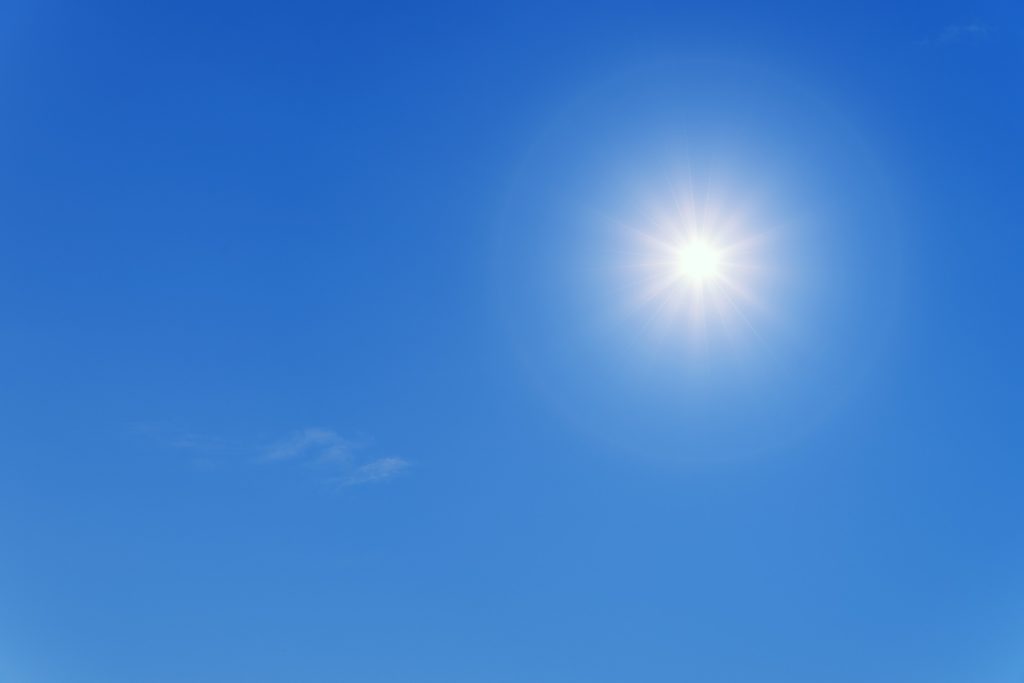Wear Sunscreen. If I could offer you only one tip for the future, sunscreen would be it.
Every year, as summer approaches, there is a small movement of people for whom a cloud of controversy surrounds sunscreen. Since the development of the first commercial sunscreen by Milton Blake in the early 1930s, some have raised questions regarding sunscreen safety, claiming it is toxic, ineffective, or even deliberately engineered to cause harm.
The exact origins of the anti-sunscreen conspiracy theory are difficult to pinpoint. It is often propagated through social media platforms, blogs, and alternative health communities that promote a naturalistic health and wellness approach. Like many conspiracy theories, it likely stems from a combination of misinformation, anecdotal experiences, and distrust in established institutions.
According to the Centers for Disease Control and Prevention (CDC), skin cancer is the most common cancer in the United States, with around 6.1 million adults treated each year for basal cell and squamous cell carcinomas. Statistics provided by Cancer Research UK suggest that 1 in 41 women, and 1 in 35 men will be diagnosed with melanoma skin cancer in their lifetime – with 86% of cases likely to be preventable. Skin cancer may have a genetic component, yet it is mostly caused by repeated unprotected sun exposure, tanning, and sunburn.
Sunscreen offers the best protection against UV radiation, which may trigger DNA damage and cause cells to become cancerous. The US Food and Drug Administration (FDA) asserts that wearing sunscreen is safe and fundamental to reducing the risk of skin cancer. There have been some reports that suggest a heightened melanoma risk associated with sunscreen application, but these statistics can be deceptive: individuals prone to sun sensitivity, who are already inherently at a greater risk of melanoma, often use sunscreens more frequently. Consequently, elevated melanoma risk among sunscreen users may primarily signify an increased risk within sun-sensitive individuals, rather than a direct consequence of sunscreen usage.
Misinformation and conspiracy theories are commonly encountered in wellness communities on social media, where credible scientific evidence frequently takes a back seat within a polarised environment that emphasizes binary viewpoints. A 2022 qualitative review of misinformation related to skin cancer shows that common themes of sunscreen misinformation include: claims around immune dysfunction, irreversible vitamin D deficiency, the inclusion of carcinogenic chemicals, not requiring sunscreen on cloudy days, suggestion of alternative homemade ‘natural’ recipes, the idea that sunscreen directly causes skin cancer and other cancers, and the promotion of alternative ‘cures’ for skin cancer.
Anti-sunscreen advocates, whether influencers, doctors, or top fashion brands, demonise sunscreen using pseudoscientific and misleading claims that trigger fear, perpetuating the myth of a healthy tan. Their voices have been intensified by wellness influencers and other health gurus, who encourage their followers to adopt a “natural” lifestyle. Sensationalist content about the harms of sunscreen encourages using natural ingredients, claiming that the chemicals in sunscreen could harm your health. TikTok creators argue that we should avoid sunscreen because our ancestors were hunters and gatherers in the sun, while others promote DIY sunscreen recipes. This latter trend gained traction due to its simple recipes, easy application, pleasant smells, and promised aesthetic benefits. However, homemade sunscreens do not come with SPF ratings and are not tested by official regulatory bodies, giving them unknown safety and effectiveness.

TikTok is particularly dangerous because video content is often more influential in memory retention and persuasion. Exposure to misleading information related to sunscreen efficacy through videos may influence individuals to adopt beliefs and behaviours consistent with the misinformation shared in the video.
Amid the interest in “natural” beauty and the awareness that certain potentially hazardous chemicals found in sunscreens are prohibited in some countries, celebrities and influencers such as Gisele Bündchen have embraced natural processes. “Synthetic” is labelled as “toxic” and “natural” is considered “clean” – whatever that means. Other influencers argue that the sun is “the life force” and it is the sunscreen that causes cancer and not the sun, arguing that the sun is “healthy” and a source of Vitamin D.
The conversation about natural beauty further fuels the fearmongering anti-sunscreen movement, and the algorithms are not helping. TikTok’s algorithm, for example, is shockingly effective at nudging and shifting a user’s preferences and beliefs.
Given the occasional headline about sunscreens, it is only normal for consumers to ask questions, and perhaps even to fall for some of the misinformation. However, as of now, all studies continue to provide evidence that sunscreen prevents skin cancer. Sunscreens, like all everyday skincare items (and everything), are made up of chemicals, but they also undergo rigorous safety testing prior to public release.
The anti-sunscreen movement, while perhaps not as alarming as the anti-vaccination movement, is still a significant concern. It illustrates another example where evidence-based science is overshadowed by ideology, posing a serious threat to public health and safety. This anti-science movement highlights the critical need for evidence-based education on skin cancer prevention. Efforts to combat misinformation, led by dermatologists and scientists, are essential in promoting the adoption of evidence-based photoprotective practices and ensuring public safety in the face of ongoing challenges posed by ideological biases.
Brandolini’s law posits that debunking false information demands significantly more effort than generating it. It reminds us of the uphill battle against misinformation, emphasising the ongoing necessity for diligent efforts in countering false narratives and prioritising evidence-based approaches in public health communication.



